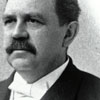 |
|
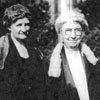 |
|
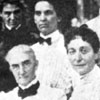 |
|
 |
|
 |
|
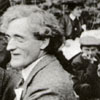 |
|
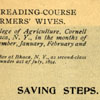 |
|

Introduction
Home economics at Cornell had its beginnings in a historic 1899 meeting in Lake Placid, New York. It was here that a new field of education emerged, dedicated to improving the quality of life in the American home through the application of modern science and management. Melvil Dewey, inventor of the Dewey Decimal System, and his wife Annie were central figures at the conference. Ellen Swallow Richards, a sanitary engineer from M.I.T., and Wilbur O. Atwater, Director of the first United States Agricultural Experiment Station and a pioneer in human nutrition research, also attended.Liberty Hyde Bailey, professor of horticulture and later dean of the College of Agriculture, brought home economics to Cornell University. On the suggestion of Anna Botsford Comstock he invited Martha Van Rensselaer to Cornell to develop the Farmers' Wives Reading Course, similar to one already in place for farmers. In 1901, the first issue of the bulletin Saving Steps attracted considerable attention. Enrollment in the reading course quickly grew to over six thousand, launching home economics as a field.
At Cornell, home economics grew as a collegiate field of study. In 1903-1904, Van Rensselaer, Bailey and Comstock offered three courses relating to home and family life within the College of Agriculture. In 1906, the first winter course was given in home economics. A year later, Bailey created a Department of Home Economics headed by Martha Van Rensselaer and Flora Rose, who in 1911 were appointed to professorships, the first for women at Cornell. In 1925, Cornell's College of Home Economics became the first state-chartered school of its type in the country, and Van Rensselaer and Rose were named co-directors. Four years later, the New York State Legislature appropriated $985,000 for the erection of a new building for the college. Martha Van Rensselaer Hall opened in 1933, and the college took its permanent place at Cornell. It became the New York State College of Human Ecology in 1969.
Select an image at left
or choose from the list below:
|
|||||||||
|
Copyright © 2001 Division
of Rare & Manuscript Collections For reference questions, send
mail to: rareref@cornell.edu
|
